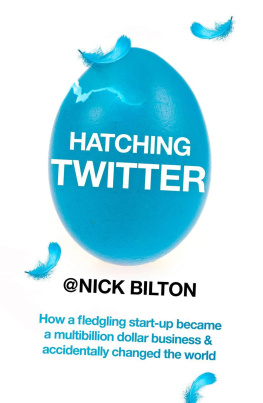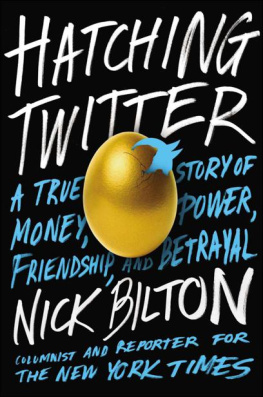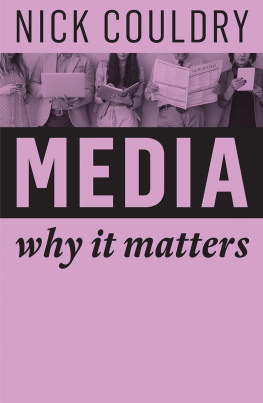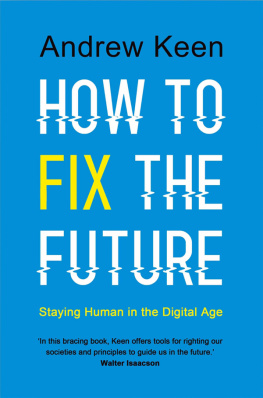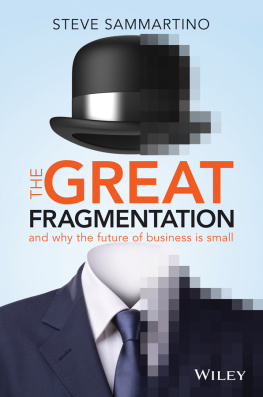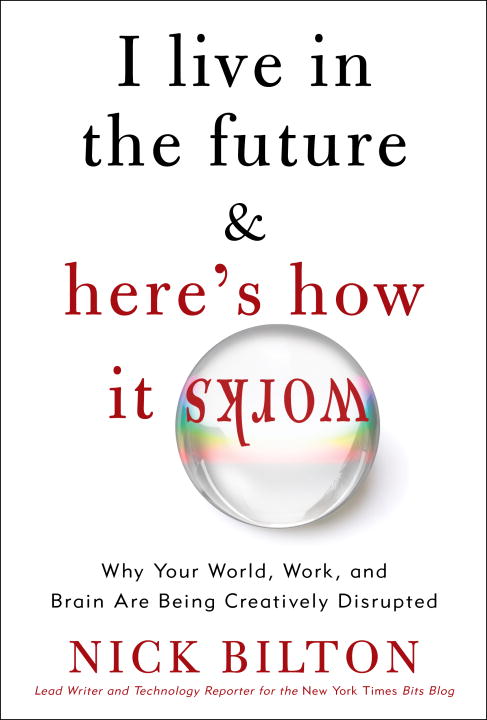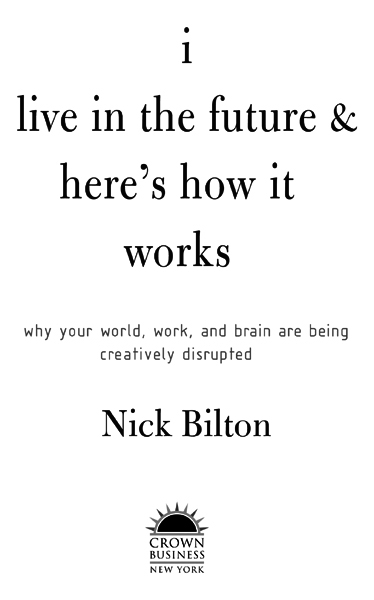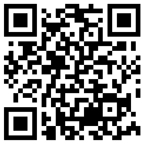Nick Bilton - I Live in the Future & Heres How It Works: Why Your World, Work & Brain Are Being Creatively Disrupted
Here you can read online Nick Bilton - I Live in the Future & Heres How It Works: Why Your World, Work & Brain Are Being Creatively Disrupted full text of the book (entire story) in english for free. Download pdf and epub, get meaning, cover and reviews about this ebook. year: 2011, publisher: Crown Business, genre: Home and family. Description of the work, (preface) as well as reviews are available. Best literature library LitArk.com created for fans of good reading and offers a wide selection of genres:
Romance novel
Science fiction
Adventure
Detective
Science
History
Home and family
Prose
Art
Politics
Computer
Non-fiction
Religion
Business
Children
Humor
Choose a favorite category and find really read worthwhile books. Enjoy immersion in the world of imagination, feel the emotions of the characters or learn something new for yourself, make an fascinating discovery.

- Book:I Live in the Future & Heres How It Works: Why Your World, Work & Brain Are Being Creatively Disrupted
- Author:
- Publisher:Crown Business
- Genre:
- Year:2011
- Rating:5 / 5
- Favourites:Add to favourites
- Your mark:
I Live in the Future & Heres How It Works: Why Your World, Work & Brain Are Being Creatively Disrupted: summary, description and annotation
We offer to read an annotation, description, summary or preface (depends on what the author of the book "I Live in the Future & Heres How It Works: Why Your World, Work & Brain Are Being Creatively Disrupted" wrote himself). If you haven't found the necessary information about the book — write in the comments, we will try to find it.
The world, as Nick Biltonwith tongue-in-cheekshows, has been going to hell for a long, long time, and what we are experiencing is the twenty-first-century version of the fear that always takes hold as new technology replaces the old. In fact, as Bilton shows, the digital era we are part of is, in all its creative and disruptive forms, the foundation for exciting and engaging experiences not only for business but society as well.
Both visionary and practical, ILive in the Future & Heres How It Works captures the zeitgeist of an emerging age, providing the understanding of how a radically changed media world is influencing human behavior:
With a walk on the wild sidethrough the porn industrywe see how this business model is leading the way, adapting product to consumer needs and preferences and beating piracy.
By understanding how the Internet is creating a new type of consumer, the consumnivore, living in a world where immediacy trumps quality and quantity, we see who is dictating the type of content being created.
Through exploring the way our brains are adapting, we gain a new understanding of the positive effect of new media narratives on thinking and action. One fascinating study, for example, shows that surgeons who play video games are more skillful than their nonplaying counterparts.
Why social networks, the openness of the Internet, and handy new gadgets are not just vehicles for telling the world what you had for breakfast but are becoming the foundation for anchoring communities that tame information overload and help determine what news and information to trust and consume and what to ignore.
Why the map of tomorrow is centered on Me, and why that simple fact means a totally new approach to the way media companies shape content.
Why people pay for experiences, not content; and why great storytelling and extended relationships will prevail and enable businesses to engage with customers in new ways that go beyond merely selling information, instead creating unique and meaningful experiences.
I Live in the Future & Heres How It Works walks its own talk by creating a unique reader experience: Semacodes embedded in both print and eBook versions will take readers directly to Biltons website (www.NickBilton.com), where they can access videos of the author further developing his point of view and also delve into the research that was key to shaping the central ideas of the book. The website will also offer links to related content and the ability to comment on a chapter, allowing the reader to join the conversation.
From the Hardcover edition.
Nick Bilton: author's other books
Who wrote I Live in the Future & Heres How It Works: Why Your World, Work & Brain Are Being Creatively Disrupted? Find out the surname, the name of the author of the book and a list of all author's works by series.


